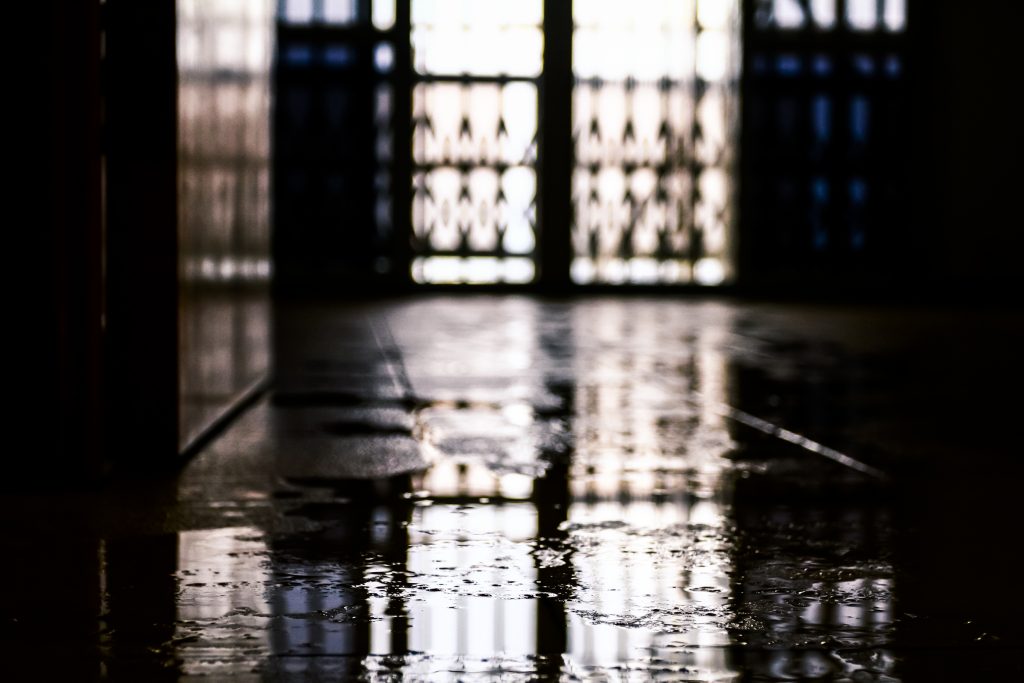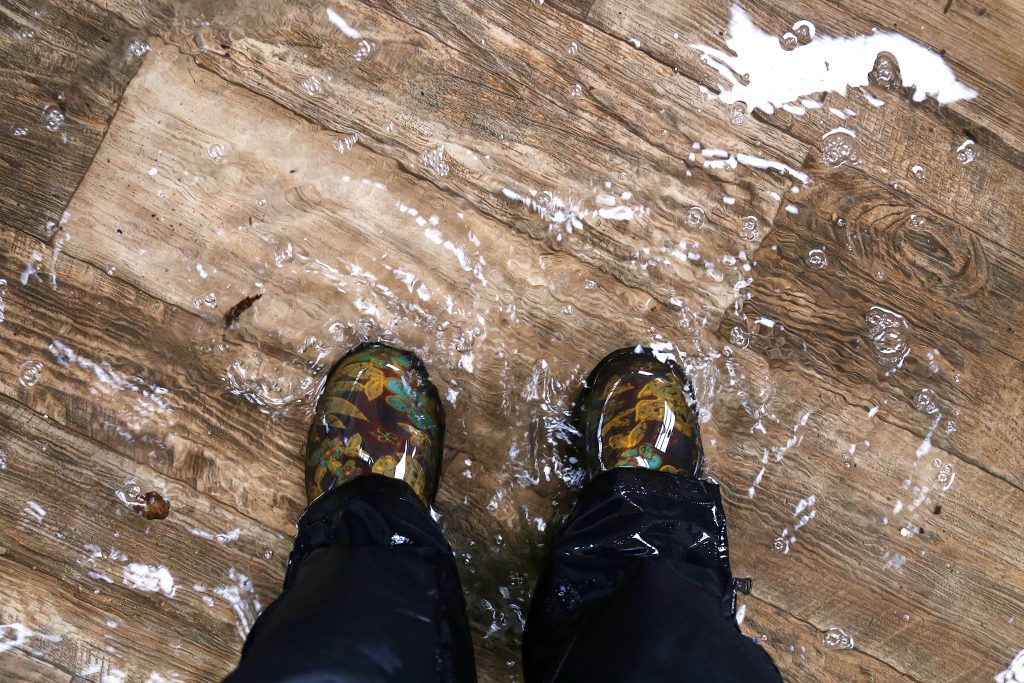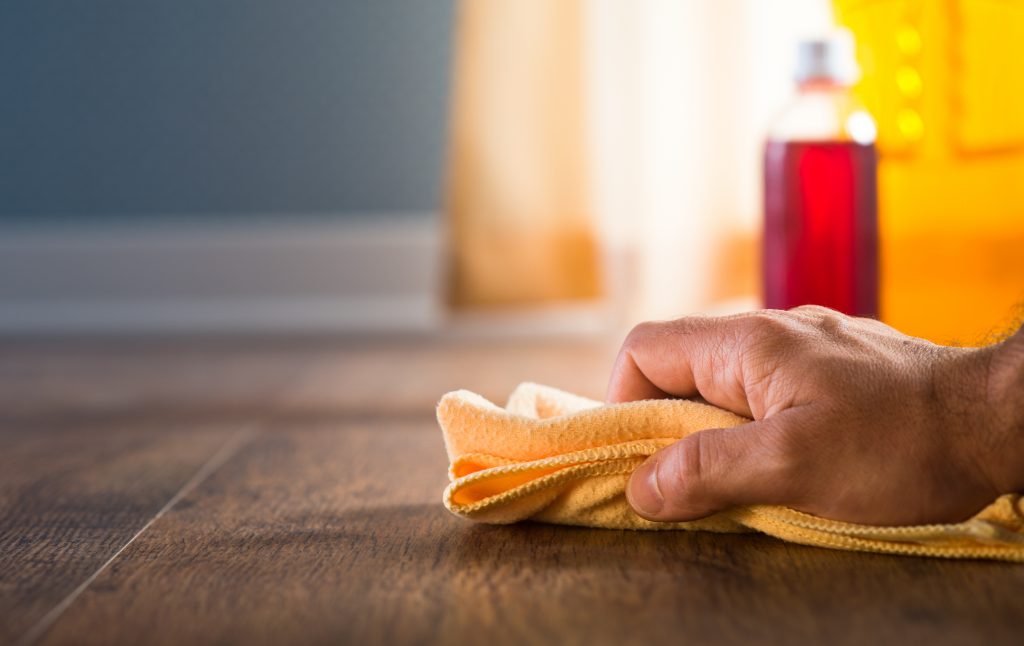
There are an abundance of benefits associated with solid hardwood, such as prestigious appearance, durability, a warm surface to walk on, and increased property value. However, hardwood flooring’s one ‘Achilles Heel’ is being susceptible to water damage. Your hardwood floor can be made highly water-resistant by applying a protective coating, but even a quality sealant won’t waterproof them. Especially if you live in a hurricane, flood-prone, or a generally high-moisture area, then you probably already know. Standing water can result in your floors never being quite the same. Still, there are steps you can take to save them! Take a few minutes to learn how to repair water damaged wood floors. Following these steps may help prevent you from having to replace your existing hardwood and install brand new flooring.
Whether it was due to flooding, heavy snow, or just a leaky pipe, water damage to hardwood flooring happens. We created this brief guide to teach you how to spot, prevent and minimize the harm standing water can cause to your hardwood floors
Prevention
Take care of your flooring
The best way to deal with water-damaged wood is to prevent it from happening in the first place. Most wood floors are manufactured with a protective polyurethane coating that is water-resistant. This layer is designed to keep dirt, grime, and water from ever touching the actual wood. Regular cleaning with proper wood care products and a microfiber mop help the sealant last longer and better protect your wood from all kinds of damage. In fact, cleaning prevents dirt and grime, which in turn prevents mold. Most people think that standing water creates mold, but in reality that is just one component. It’s the combination of water and dirt that leads to bacteria growth. Great maintenance will usually block out all excess moisture that is not left unattended for a long time.
How to spot water damage on wood floor

Water damage can be due to accumulation over time or because of a sudden event (i.e. floods). It’s more obvious to know when you are ankle-deep in water, that there is damage to your flooring. Gradual degradation over time is a little bit more challenging to spot, but by the time you do, the water has already weakened your flooring. The first sign you have water damage is the crowning of planks, leading to a hump in the floor. Once your floor absorbs water, it expands and the edges of the board begin to buckle upward. A more obvious sign is a physical change in color. Black, dark staining along the edges of a plank is caused by a combination of mold/mildew growth, tannins in the wood reacting to mineralized water, and potential rusting from nails. If there is dark discoloration throughout a whole section of the floor, it needs to be replaced either plank by plank or entirely.
Replace Laminate
Laminate is mock hardwood flooring and is a very poor choice for moisture-prone rooms or homes. It is different from solid hardwood and engineered wood (also known as luxury vinyl). Most laminate flooring is made of wood pulp, similar to particle boards. Laminate is highly susceptible to water damage, swelling as more water soaks the material. Once damaged by water, the integrity is ruined and must be replaced.
Act Fast!
Continuous, standing-water is the main enemy of hardwood floors. Think about, trees are in the business of absorbing and retaining as much water as possible. The cellulose fiber in your floor absorbs water quickly and releases it slowly, just as a tree would. Thus, if there is standing water, attend to it as quickly as possible! A quality sealant will help, but wood floors are filled with tiny infiltration points that allow water to seep in, like between the seams and underneath baseboards. It’s imperative to clean immediately, especially if it is dirty water. Muddy, sandy, and generally dirty water leads to mold.
The Repair Process
Supplies Needed
Sometimes, in extreme flooding events or pipe bursts, it can be a lost cause. There is nothing you can do but hire a professional to rid of the water, strip the entire hardwood, kill the bacteria growth, and install new flooring. If you experienced major flooding, hardwood may not be the best choice for your home in the future. Learn more about the best moisture-prone flooring for your home. In cases of isolated areas of standing water or a very minor flooding event, you can minimize the damage and save your floors. If you think this is your situation, continue reading to learn how to best solve your water damage issue. To the right is a list of supplies you will need if you decide to take on the cleaning process personally:
Required Items
- Stiff Brush
- Shop Vacuum
- Squeegee & Absorbent Cloth
- Mild detergent & Disinfectant
- TSP (trisodium phosphate for mold)
- Bucket & Rubber gloves
- Fans or Carpet Criers
Step #1
Remove the water
Most vacuums will have a wet mode. If your vacuum lacks this, consider renting one with this feature from your local store. With no vacuum bag inside, turn on the wet mode and start to vacuum the surface of the floor with a wide hose attachment. After your initial cleaning with the vacuum, grab a squeegee to gather any water your vacuum missed.
Step #2
Scrub the floor
Grab your mild detergent and a compatible disinfectant such as Mr. Clean (never mix bleach with any other cleaning products). Add your detergent and disinfectant into a bucket with warm, clean water. Scrub the entirety of your floor and woodwork with a stiff brush. Woodwork includes all your baseboards, stairs, posts, etc. Rinse your brush frequently in the bucket. Keep your water usage to a minimum, no need to add excess water. Really take your time when scrubbing. Focus on removing all the dirt, mud, and grime. Any organic material will lead to bacteria growth.
Step #3
Treat moldy areas
See signs of mold? Trisodium Phosphate cleaner, which can be found at most hardwood stores or megastores, will help minimize and kill mold growth. Scrub affected areas with TSP until mold discoloration is gone. Rinse with clean water and dry with an absorbent cloth.
Step #4
Dry the floor
It is important to dry the floor slowly, steadily, and naturally. Drying too quickly can cause wood to weaken and crack. Open up windows and allow plenty of outdoor airflow to fill and dry your affected area. Place your large fan or carpet drier (which can most likely be rented at a Homegoods store) in a door opening with the fanned airflow pointing toward a window. If the outdoor area is more humid than inside your home, close the windows and run fans.
Post-treatment

Sanding water-damaged floors
When you dry out the wood floor, you might see some floorboards bending upward or downward. This is known as ‘cupping’. This can be fixed with heavy sanding. A drum or orbital sander can help reduce some of this cupping. Still, extremely cupped areas cannot be made flat again. For these cases, face-nail the floorboards back down. If you are unfamiliar with sanding, avoid mistakes, frustration, and potential damages by hiring a professional.
Mold on wood under paint
This can be a challenging and tricky issue. If you find mold in between the paint and the wood, you must remove the finish. Paint creates a sealant layer that traps water in the wood. Scrape off the paint/finish and scrub the wood with an abrasive cleaner. Dry the floor as described in step four above. After the floor is completely dry, refinish your hardwood flooring.
Restore and repair your flooring
CONNECTING YOU WITH LOCAL FLOORING REPAIR PROFESSIONALS YOU CAN TRUST!
PoweredByPros is a leading digital home services marketplace. We match homeowners from across the nation with screened remodel and repair professionals they can trust to successfully complete any type of home improvement or renovation project. For over a decade, homeowners have trusted us with providing them professional and quality services for their property. In order for us to connect you with the best flooring installation and repair pro, our highly skilled customer service team will contact you to gather all your project information and pay special attention to your design and amenity requests. We make planning, budgeting, and hiring a local water damage repair contractor easy and free! Save time and money, get started today!